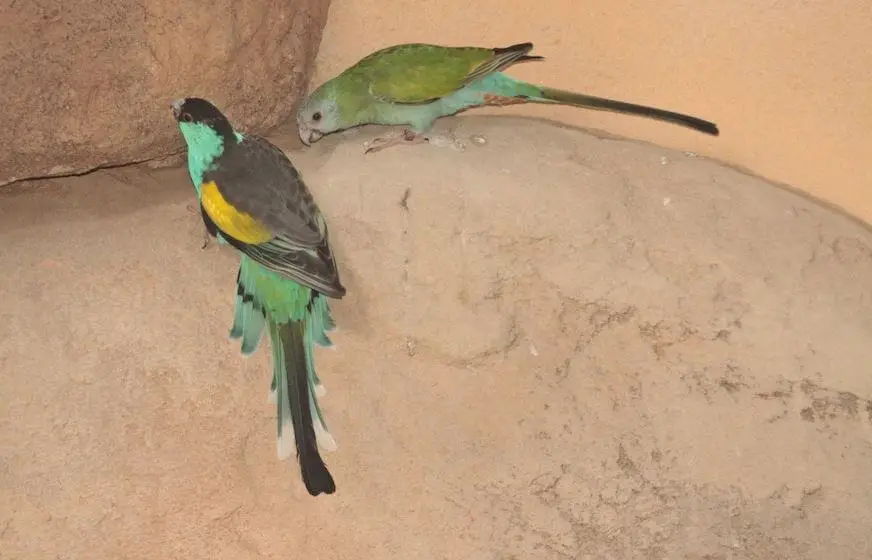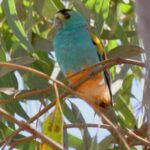
Hooded Parrot 26 cm; 50–60 g. Similar to P. chrysopterygius but with all-black crown from the base of the upper mandible, darker brown uppersides, larger and brighter yellow wing patch, red on underparts confined to vent.
Hooded ParrotFemale like female P. chrysopterygius but more shot with grey, and with emerald green, not turquoise-blue rump. Immature like a female, male somewhat brighter.
Systematics History
Forms a species group with P. chrysopterygius and †P. pulcherrimus; close to former, and in the past considered conspecific. Monotypic.
Subspecies
Monotypic.
Distribution
N Northern Territory, in N Australia.
Habitat
Open woodlands and savanna grasslands with an abundance of terrestrial termitaria, most Hooded Parrot nests being placed in ridge country, though some in low Melaleuca-dominated floodplains.
SOURCE: Bird Jamboree
Movement
Birds were formerly recorded as wet season immigrants (Nov–Mar) to Melville I, but unclear if they bred there or not.
Diet and Foraging
In the early wet season seeds of perennial grasses (23 species of Poaceae) when available, otherwise seeds of herbaceous plants and annual grasses.
Sounds and Vocal Behavior
Hooded Parrot call is a melodious bubbling “chu-wheeh!”. Other calls include a short staccato “peet!” and a lower pitched “chup”, which are sometimes alternated.
Breeding
Jan–Apr or May. Hooded Parrot Nest mainly in turreted termitaria. Eggs laid at 1·5–2· 5-day intervals; average clutch size 4·3, with 50% of eggs laid producing fledglings.
Conservation Status

Not globally threatened. CITES I. Previously considered Near Threatened. A BirdLife “restricted-range” species.
The decline of the Hooded Parrot since the start of the 20th century correlated with penetration of habitat by cattle, which destroy some nest sites by rubbing against termitaria, and must also graze out part of the local food supply.
However, still generally numerous, and the population in one reserve is estimated at 12,000 birds. Nest densities range from 0·45 to 0·70/km².




















